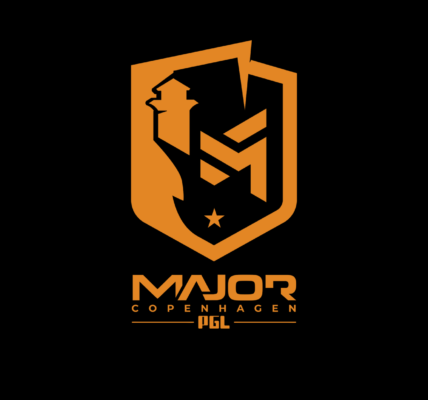Esports betting is booming, attracting millions of enthusiasts who watch games like League of Legends, Dota 2, CS:GO, Valorant, and many more. But succeeding consistently requires more than just luck or casual knowledge. One of the most advanced and promising approaches blends data science, statistics, and machine learning to build predictive models that uncover value bets and improve long-term profitability.
This guide walks you through how to build a data-driven esports betting model using machine learning, explaining the process from data collection to model use, including formulas and important concepts.
Why Machine Learning Makes Sense for Esports Betting
Unlike traditional sports betting, esports offers rich, detailed datasets with player stats, team histories, patch changes, and evolving game metas. Machine learning models can analyze this complex data at scale, detecting nonlinear patterns and interactions impossible for humans to track consistently. These models provide probabilistic predictions of match outcomes and can adjust dynamically as new data arrives, giving bettors an edge over bookmakers and the general public.
Collecting Data and Crafting Features
The first step in building a machine learning model is gathering comprehensive data. This includes match outcomes (wins and losses), player statistics (kills, assists, deaths, accuracy), team performance metrics (win rates on specific maps, preferred compositions), and in-game metrics like first bloods or objective control. Additionally, understanding patch notes and meta shifts is crucial since they heavily influence gameplay.
Once collected, raw data must be transformed into features — numerical representations that the model can analyze. For example, recent team form might be represented as the win percentage over the last 10 games:
Wform=Number of wins in last 10 matches10W_{form} = \frac{\text{Number of wins in last 10 matches}}{10}
A player’s impact might be distilled into a score combining kills, assists, and deaths with appropriate weights:
PIS=α×Kills+β×Assists−γ×DeathsPIS = \alpha \times \text{Kills} + \beta \times \text{Assists} – \gamma \times \text{Deaths}
Map-specific win rates for a team are also important:
MWR=Wins on mapTotal games on mapMWR = \frac{\text{Wins on map}}{\text{Total games on map}}
These features, along with meta adaptability indexes and other relevant statistics, form a vector x\mathbf{x} that summarizes the important information about a matchup.
Choosing and Training the Model
Your goal is to predict the probability that one team will win a match. We define the target label yy as:
y={1if Team A wins0if Team B winsy = \begin{cases} 1 & \text{if Team A wins} \\ 0 & \text{if Team B wins} \end{cases}
Common models include logistic regression, which is simple and interpretable; random forests and gradient boosting machines like XGBoost, which handle nonlinearities well; and neural networks, useful if you have large datasets and want to capture complex relationships.
Logistic regression models the win probability as:
p=P(y=1∣x)=11+e−(w⊤x+b)p = P(y=1|\mathbf{x}) = \frac{1}{1 + e^{-(\mathbf{w}^\top \mathbf{x} + b)}}
where w\mathbf{w} represents feature weights and bb is a bias term. The model is trained by minimizing the log-loss function, which penalizes wrong predictions more heavily the more confident they are:
L=−1N∑i=1N[yilog(pi)+(1−yi)log(1−pi)]\mathcal{L} = -\frac{1}{N} \sum_{i=1}^{N} \left[ y_i \log(p_i) + (1 – y_i) \log(1 – p_i) \right]
Here, NN is the number of samples.
Training involves splitting your data into training and testing sets, fitting the model on training data, and then evaluating how well it predicts the outcomes on unseen test data.
Evaluating the Model’s Effectiveness
Accuracy — the percentage of correct predictions — is one metric but can be misleading if one outcome is much more common. More insightful metrics include:
- AUC-ROC: Measures how well the model distinguishes between winners and losers.
- Calibration: Assesses if predicted probabilities reflect true likelihoods. For example, matches predicted with a 70% win chance should end with a win roughly 70% of the time.
- Confusion Matrix: Provides counts of true positives, false positives, etc., to understand prediction types.
Calibration is especially important for betting since you rely on the probability estimates to compare with bookmaker odds.
Identifying Value Bets Using the Model
The ultimate goal is to find bets where your model’s predicted probability pp is higher than the bookmaker’s implied probability pbookp_{book}, derived from the odds OO:
pbook=1Op_{book} = \frac{1}{O}
A value bet satisfies:
p>pbookp > p_{book}
The expected value (EV) of such a bet, representing the long-term profitability, is:
EV=p×(O−1)−(1−p)×1=pO−1EV = p \times (O – 1) – (1 – p) \times 1 = pO – 1
If EV>0EV > 0, the bet is profitable in the long run. This mathematical comparison forms the heart of a smart betting strategy.
Example: Applying Logistic Regression to Predict Match Outcomes
Imagine your model uses four features:
- x1x_1: Team A recent win rate
- x2x_2: Team B recent win rate
- x3x_3: Team A map win rate
- x4x_4: Team B map win rate
Suppose your trained model weights and bias are:
w=[2.5,−2.0,1.5,−1.0],b=0.3\mathbf{w} = [2.5, -2.0, 1.5, -1.0], \quad b = 0.3
For a match where:
x=[0.7,0.6,0.8,0.7]\mathbf{x} = [0.7, 0.6, 0.8, 0.7]
Calculate the linear combination:
z=2.5×0.7−2.0×0.6+1.5×0.8−1.0×0.7+0.3=1.75−1.2+1.2−0.7+0.3=1.35z = 2.5 \times 0.7 – 2.0 \times 0.6 + 1.5 \times 0.8 – 1.0 \times 0.7 + 0.3 = 1.75 – 1.2 + 1.2 – 0.7 + 0.3 = 1.35
Transform with the logistic function to get the predicted probability:
p=11+e−1.35≈0.79p = \frac{1}{1 + e^{-1.35}} \approx 0.79
If bookmaker odds for Team A are 1.6, the implied probability is:
pbook=11.6=0.625p_{book} = \frac{1}{1.6} = 0.625
Since p=0.79p = 0.79 is greater than pbook=0.625p_{book} = 0.625, this represents a value bet. The expected value of the bet is:
EV=0.79×(1.6−1)−(1−0.79)=0.79×0.6−0.21=0.474−0.21=0.264>0EV = 0.79 \times (1.6 – 1) – (1 – 0.79) = 0.79 \times 0.6 – 0.21 = 0.474 – 0.21 = 0.264 > 0
A positive EV indicates that placing this bet repeatedly will yield profits over time.
Additional Tips for Advanced Model Development
Understanding which features most influence your model’s predictions can help refine your approach. Techniques like feature importance measures or SHAP values clarify the contribution of each feature.
Because esports metas and team performances change rapidly, regularly updating your model with fresh data keeps predictions accurate. You can also improve robustness by combining models in an ensemble, averaging their outputs or stacking them for better performance.
Wrapping It Up
The power of data-driven machine learning in esports betting lies in its ability to analyze complex, multifaceted data and produce reliable win probabilities. By comparing these predictions against bookmaker odds, you identify value bets and increase your chances of long-term profitability.
This strategy requires time, effort, and technical skills — from data collection and cleaning to model training and evaluation — but the payoff is a sustainable edge in a competitive betting environment.




